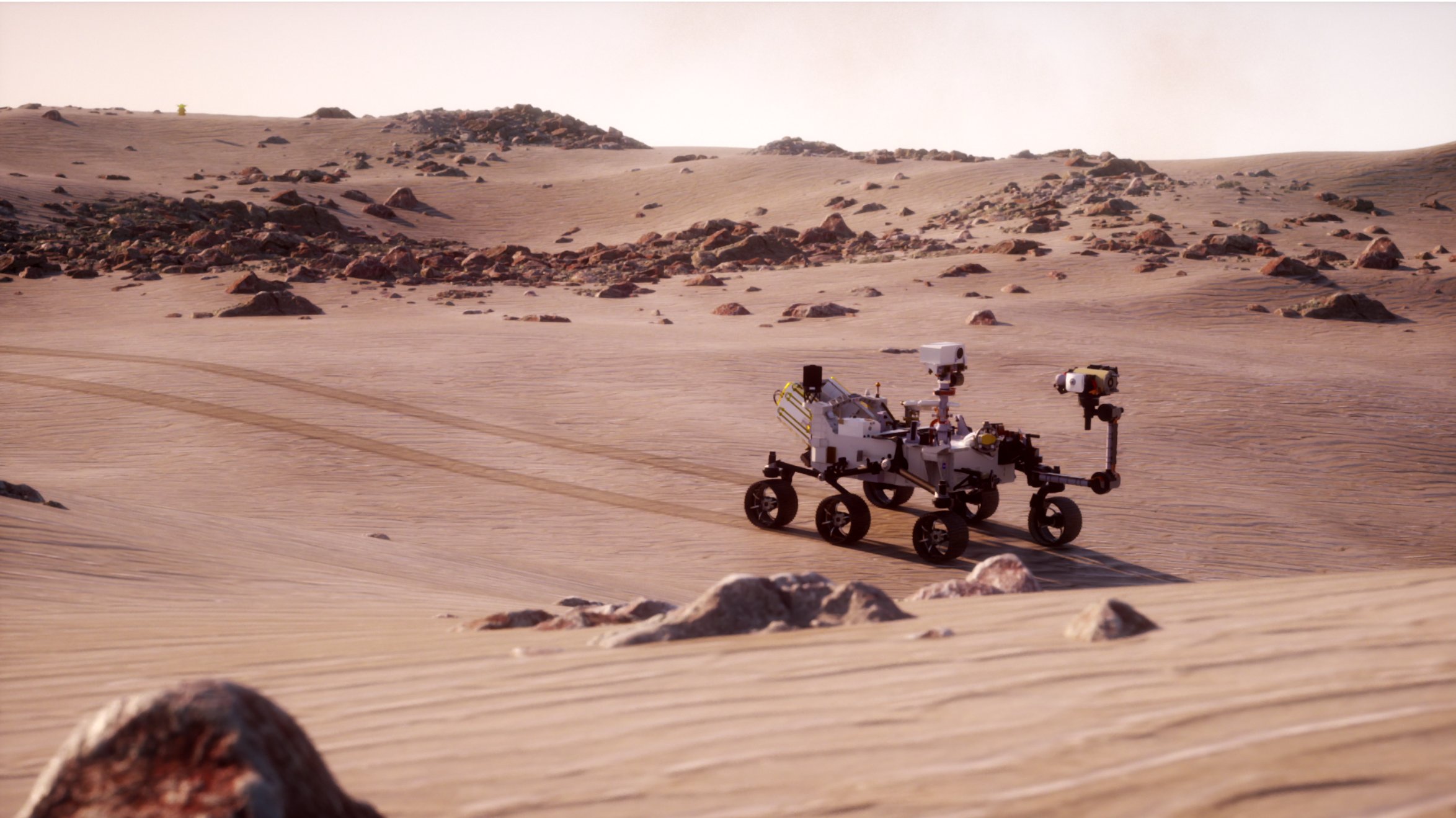
Last July NASA’s newest Mars rover lifted off from SLC-41 at Cape Canaveral Space Force Station. This began its roughly 6-month journey to the Red Planet and tomorrow will bring the long awaiting landing of the rover onto the surface, reusing the similar Skycrane maneuver used by its twin rover Curiosity.
With Mars being about 200 million kilometers (124 million miles) away from Earth, it isn’t possible to control Perseverance in real-time from the ground. It will take about 11 minutes to know if the rover landed safely, by the time teams on the ground see it start it has entered the atmosphere, the rover has already landed one way or another.
NASA has landed successfully 8 times on the surface of Mars and they hope to bring that number to 9 tomorrow. The Mars 2020 mission is a combination of the Perseverance rover carrying a suite of brand new experiments and the Ingenuity helicopter that will become the first vehicle to attempt powered flight on another planet.
All of this launched on top of an Atlas V rocket back during the hardest parts of the COVID-19 pandemic and finally, it begins the final moments of its interplanetary travels tomorrow. NASA will begin coverage of the landing with a live stream for students starting at 12:30 PM Est. Following that will be the main landing stream which you can watch almost anywhere you can find a NASA page.
How Mars 2020 Lands
Perseverance borrows a lot from its predecessor including how it gets to the ground. While the other two missions sent by Earth last year entered Mars orbit, Perseverance will not. This is to maximize the amount of scientific payload and not have to bring a powerful engine and fuel to slow itself down. That being said, Perseverance will be coming in at interplanetary transfer speeds which is about 80 thousand km/hour (50 thousand mi/hour).

The first part of the landing starts high above the surface where the spacecraft detaches the cruise stage, this part was used to make sure the rover made it to Mars at the exact orientation and speed. Since it is no longer need it is ditched and left to burn upon entry.
Facing forward is the heat shield, designed to take the heat of the spacecraft hitting the Martian atmosphere, while thin it will still produce enough heat that it is needed. In this stage, the rover will experience the majority of its deceleration. At about 13 km (8 mi) above the surface, the aeroshell which covers the rover will deploy its parachute. This will continue to slow down the rover more while it gets closer to its landing spot.
Perseverance’s Party Trick
Due to the thin atmosphere, a parachute landing isn’t possible like it is here on Earth. NASA’s Jet Propulsion Laboratory engineers have gotten pretty creative over the years with different ways to safely land on the surface. From traditional landers to covering the spacecraft in inflatable airbags this time they will reuse Curiosity’s method, the Skycrane.

The Skycrane, attached to the top of the rover, is dropped from the aeroshell at around 2 km (1.2 mi) above the surface. It immediately fires its landing engines and turns sideways to keep away from colliding with the aeroshell and parachute above it, it must fire its engine immediately to maintain stability. As it descends to the surface, the onboard guidance computer will find a suitable landing site inside Jezero Crater that is safe and hopefully close to sites of scientific importance.
About 200 m (656 ft) above the surface, the rover will be lowered to the surface on nylon tethers like a scene out of Mission Impossible. Once the wheels touch the ground the tethers are snapped and the Skycrane flies away to impact the surface at a safe distance.

All of this in 7 minutes, not one part of the process can fail. Either way, after these 7 minutes Perseverance will be on the surface of Mars and there is nothing that controllers here on Earth can do to fix any issues.
If all goes well, we will have a brand new rover on Mars that is purpose-built to search for ancient life and the first step in a plan to return Martian soil samples back to Earth.
Enjoy reading Space Explored?
Help others find us by following on Apple News and Google News. Be sure to check us out on YouTube, Twitter, Facebook, and Instagram, join our Discord!
FTC: We use income earning auto affiliate links. More.




Comments